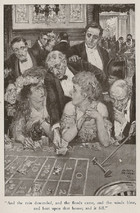Arthur Ernst Becher
(1877-1960)
Born in Freiberg, Germany, Arthur Ernst Becher emigrated with his parents at the age of six to Milwaukee, Wisconsin, a Midwestern city with a large German population. He first learned to draw from emigre artists, trained in the classical European academic style. This grounding in realistic art served Becher well, when he was one of the handful of applicants accepted in 1902 to the Howard Pyle School of Illustration Art in Wilmington, Delaware. Considered to be the Father of American Illustration, Pyle fostered a dynamic, visually entertaining style of book and periodical illustration, far removed from the static, theatrical tableaux imagery of the past. Becher thrived under Pyle’s two year tutelage and soon established himself on the publishing circuit.
Becher’s decision to pursue a career in illustration coincided with an extraordinary boom in the American publishing industry. Growing literacy in the general population had created a readership for popular publications just at a time when new technological developments in printing, better mail service, and an ever expanding advertisement industry made it possible to mass market cheap pulp fiction and instructive literature. Becher excelled in illustrating escapist, adventure tales of young princes, caught up in palace intrigues; North Eastern socialites, experiencing the hardship of life on the Prairies; and would-be heiresses, kidnapped before they claimed their fortunes, for periodicals like Scribner’s Magazine, Collier’s Weekly, and the Ladies’ Home Journal.
Moralizing fiction and Bible stories were also staple reading for Americans at the dawn of the 20th century, and Becher often turned his hand to sacred themes like the cover picture on display from the December 1922 issue of McCall’s, showing the Expulsion of Adam and Eve from the Garden of Eden. He frequently drew with waxy crayon, creating images, resembling grisaille paintings. The Sacred Art Pilgrim library has two books with these grey-toned illustrations by Becher: a 1908 edition of David: Warrior. King. Poet. and a 1907 printing of The Parables. In the latter book, Becher decks out the parables of Jesus in contemporary dress to prick the conscience of Gilded Age Americans, depicting a Prodigal “Daughter,” returning home with a child, presumably, born out of wedlock, and gambling society figures, building their "houses upon sand."
The Sacred Art Pilgrim Collection owns a unique series of Becher watercolor, gouache, and pencil sketches on biblical themes with personal annotations to be used as illustrations. And the Whole Town Was Gathered at the Door, based on Mark 1:33, renders Jesus the compassionate healer of the multitudes in brilliant, dabbed brushstrokes. In Lead Kindly Light, the Shepherds move out of a purple mist to catch a glimpse of the Christ child, illuminated by the Christmas Star. In a sentimental period scene, titled Resurrection, the first shoots of spring flowers recall Easter Sunday. In I am the Vine and Ye are the Branches, Becher’s wife, Frieda, serves as the model for the Joan of Arc-like figure who sees Christ in the grape arbor. These are the works of a master colorist.
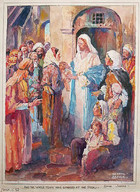
Mark 1: 33: "And the Whole Town Was Gathered..."

Lead Kindly Light

Resurrection
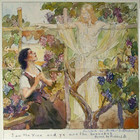
I am the Vine and Ye are the Branches
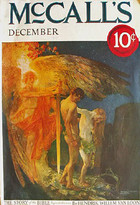
The Expulsion of Adam & Eve
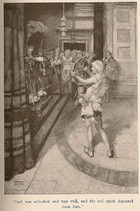
David at Court

David Fights Goliath
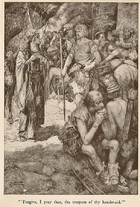
David and Abigail
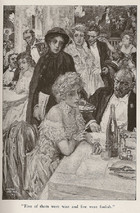
The Wise and the Foolish Virgins
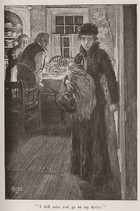
The Prodigal Son
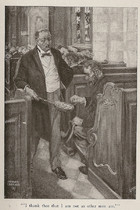
The Pharisee and the Publican
